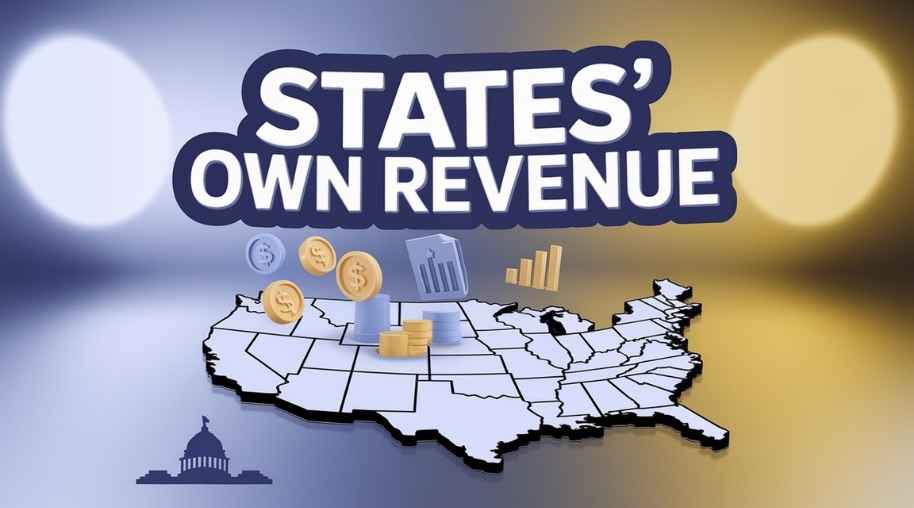SOR Full Form-States' Own Revenue
by Shashi Gaherwar
0 1837
States’ Own Revenue: Sources, Importance, and Fiscal Autonomy

Introduction
In a federal structure, revenue generation and financial autonomy are crucial for a state’s ability to govern efficiently. States’ Own Revenue (SOR) refers to income collected directly by state governments from various sources, independent of central government transfers. It is a vital component of state finances, enabling funding for development projects, public services, and financial independence.
This article explores the sources, importance, challenges, and measures to enhance States’ Own Revenue, emphasizing its role in economic development and governance.
What is States’ Own Revenue?
States’ Own Revenue (SOR) is the income generated by state governments through their own taxation and non-tax sources. Unlike central grants or shared taxes, SOR provides states with direct control over their finances, supporting budgetary planning and execution.
Components of States’ Own Revenue
- Own Tax Revenue: Generated from taxes imposed by the state government.
- Own Non-Tax Revenue: Income from state-owned enterprises, fees, and natural resources.
Sources of States’ Own Revenue
Own Tax Revenue forms the largest component of SOR and includes:
- State Goods and Services Tax (SGST): Levied on intra-state goods and services, contributing 60-70% of tax revenue.
- State Excise Duty: Imposed on liquor and narcotics, significant in high-consumption states.
- Stamp Duty and Registration Fees: Charged on property transactions, stable in urban states.
- Motor Vehicle Tax: Levied on vehicle sales and registration, higher in automotive hubs.
- Entertainment and Betting Taxes: Collected from cinemas, gaming, and betting activities.
- Electricity Duty: Charged on electricity consumption, key for industrial states.
Own Non-Tax Revenue includes income from state-controlled resources:
- Interest Receipts and Dividends: Earnings from state investments in public enterprises.
- Fees and Fines: Revenue from permits, court fees, and penalties.
- Mining and Royalty Charges: Significant in resource-rich states from mining leases.
- State-Owned Enterprises: Profits from electricity boards and transport corporations.
- Lottery Revenue: Income from government-run lotteries in some states.
Importance of States’ Own Revenue
- Fiscal Autonomy: Reduces dependency on central grants, enabling financial independence.
- Economic Development: Funds infrastructure, health, and education for local priorities.
- Better Governance: Supports efficient delivery of public services like roads and electricity.
- Fiscal Deficit Reduction: Strong revenue minimizes borrowing and ensures stability.
- Incentive for Growth: Attracts investments by improving business environments.
Challenges in States’ Own Revenue Generation
- GST Implementation: Subsumed state taxes, reducing control and creating revenue uncertainties.
- Limited Taxing Powers: High-revenue taxes like income tax are centrally controlled.
- Economic Variability: Revenue fluctuations in states reliant on tourism or mining.
- Tax Evasion: Inefficient collection and loopholes lead to revenue losses.
- Political Challenges: Tax waivers for political gains reduce potential revenue.
Measures to Enhance States’ Own Revenue
- Strengthening Tax Collection: Use technology and data analytics to improve compliance.
- Expanding Tax Base: Broaden property taxes and introduce new revenue streams.
- Improving Non-Tax Revenue: Monetize state assets and enhance tourism and mining income.
- Rationalizing Excise and Stamp Duty: Set competitive rates to prevent underreporting.
- Inter-State Coordination: Collaborate for effective tax enforcement.
Future Trends in States’ Own Revenue Generation
- Digital Taxation: Adopt AI-driven audits and e-governance for compliance.
- Green Taxes: Introduce carbon taxes and environmental levies.
- Decentralization: Increase state control over revenue post-GST compensation.
- Infrastructure Monetization: Lease public assets like highways for steady income.
States’ Own Revenue is the backbone of regional economic autonomy, enabling funding for development projects and essential services. While tax and non-tax sources provide stability, challenges like GST shortfalls and tax evasion must be addressed.
By adopting modern revenue collection strategies, expanding the tax base, and optimizing non-tax resources, states can enhance financial sustainability and drive long-term economic growth. A robust SOR system is key to stronger fiscal federalism and national development.
Further Learning Resources
If you’re passionate about building a successful blogging website, check out this helpful guide at Coding Tag – How to Start a Successful Blog. It offers practical steps and expert tips to kickstart your blogging journey!
For dedicated UPSC exam preparation, we highly recommend visiting www.iasmania.com. It offers well-structured resources, current affairs, and subject-wise notes tailored specifically for aspirants. Start your journey today!

Share:








Comments
Waiting for your comments